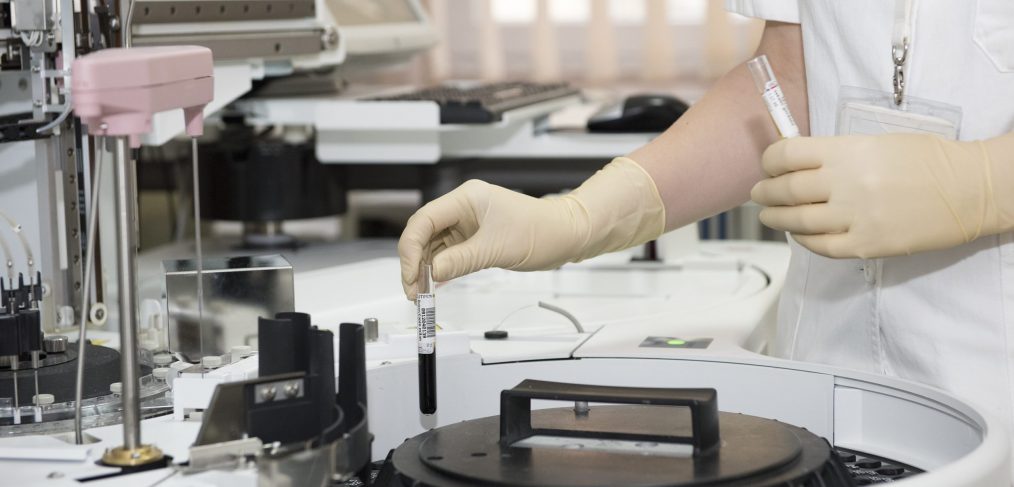
LA AYUDA DEL LABORATORIO CLÍNICO EN EL DIAGNÓSTICO MÉDICO: EL HÍGADO Y LAS PATOLOGÍAS HEPÁTICAS.THE HELP OF THE CLINICAL LABORATORY IN THE MEDICAL DIAGNOSIS: LIVER AND HEPATIC PATHOLOGIES.
El hígado es el órgano interno más grande del cuerpo y la gran fábrica de transformación para aprovechar todo lo que entra en el cuerpo para purificarlo y prepararlo para que el organismo elimine todo lo que no es utilizable o puede dañar al organismo. Protegido de golpes externos por las costillas, el hígado se encuentra en la región hipocondrítica derecha del abdomen y se relaciona con el corazón a través del centro frénico, a la izquierda de la vena cava inferior.
La ausencia de hígado o su falta de funcionamiento es incompatible con la vida
El hígado es un trabajador infatigable, extremadamente importante, y es también el gran desconocido del cuerpo humano. Todo lo que comemos termina en el hígado. En el hígado las sustancias son clasificadas, procesadas, almacenadas y enviadas a otras partes del cuerpo. Si son dañinos, se neutralizan y expulsan del cuerpo.
– El hígado realiza más de 500 funciones.
El hígado usa 81 litros de oxígeno al día. ¡Más oxígeno que el cerebro! La mayoría de los hígados tienen 50.000 a 100.000 “lobulillos” que consisten en una vena rodeada de diminutas células hepáticas llamadas hepatocitos. Estas células purifican la sangre, eliminan los desechos y toxinas y almacenan nutrientes saludables para que el cuerpo lo use cuando sea necesario.
– Es un órgano muy vascularizado: Dentro del hígado, hay constantemente casi 1 litro de sangre. Cada día procesa y purifica más de 20 litros de sangre. Muchas funciones relacionadas con el sistema circulatorio, el metabolismo y el sistema inmune tienen su origen en el funcionamiento del hígado
Por si todas estas funciones aún fueran escasas, el hígado tiene una función muy importante de defensa del organismo frente a infecciones por virus y bacterias y macromoléculas extrañas al organismo. Además de todo lo anterior, en nuestra vida fetal, dentro de nuestra madre, el hígado es el principal órgano de producción de glóbulos rojos durante las primeras doce semanas de gestación. Desde la 12 ª semana de gestación, la médula ósea asume esta función.
. El Laboratorio tiene una serie de pruebas que indican como trabaja nuestro hígado para cumplir todas y cada una de sus más de 500 funciones. Para verlo, de forma objetiva, el médico le pide al laboratorio primero una serie de pruebas que denominamos “Funcionalismo hepático general” y, a partir de estos primeros datos, si es necesario, el laboratorio tiene a disposición del médico clínico suficientes pruebas más para continuar investigando el origen del posible problemas de funcionamiento del hígado.
Aunque las pruebas de la función hepática se pueden realizar sin ninguna preparación previa, los resultados serán más precisos si se hace en ayunas. Debe saber si está tomando algún medicamento, porque ciertos medicamentos pueden alterar los resultados.
Análisis del funcionamiento.
• Bilirrubina. Albúmina . Índice internacional normalizado (IIN), antes conocido como tiempo de protrombina (TP).
Enzimas hepáticas
Alanina transaminasa (ALT). (G.P.T)
Aspartato transaminasa (AST). (G.O.T)
Ambas miden fundamentalmente daño agudo a los hepatocitos
Gamma glutamil transpeptidasa (GGT).
Provee información acerca de enfermedades hepáticas y para identificar la ingestión de alcohol.
5′-nucleotidasa. (una enzima específica del hígado). La concentración de la 5′-nucleotidasa
Aumenta en personas con enfermedades hepáticas, en particular, aquellas enfermedades asociadas con colestasis.
Según los resultados o la sospecha del médico, y solo con un propósito de sistematizar pruebas y sin ningún afán de inclusión de de la totalidad de las pruebas posibles, podría platearse al laboratorio de análisis clínicos
a.- Incorporar a la primera solicitud de pruebas al laboratorio todas o algunas de las siguientes pruebas
• Fosfatasa alcalina e Isoenzimas de la fosfatasa alcalina
• Leucina aminopeptidasa
• Globulina fijadora de tiroxina
• Aldolasa
• Proteínas Totales
• Proteinograma
• Metabolismo de hierro:
b.- Si sospechamos la existencia de una Hepatopatia de origen auto inmunitario , aparte de solicitar al laboratorio las pruebas para una primera evaluación del funcionamiento hepático podemos solicitar:
• Nefelometria cuantitativa.: IgG, IgA, IgM.
• Pruebas analititicas para Hepatopatia de origen auntoinmunitario
• Anticuerpos antimicrosomales de hígado/riñón
• Anticuerpos antimitocondriales
• Anticuerpos antinucleares
• Anticuerpos antimúsculo liso.
c.- En el caso de que por la historia clínica se pudiera sospechar que lso trastornos hepáticos se debieran a:
c.1:- Enfermedades infecciosas
Hepatitis A, B y C
Leptospirosis
Enfermedad de Lyme
Fiebre Q y otras ricktettsiosis
c.2.- Enfermedades parasitarias
Infestación por cestodos, Hidatidosis y Faciolasis., Equistosomiasis., clonorquiasis ( asia oriental) y opistorquisis( oeste de Europa), Toxocariasis y ascaridiasis, Paludismo., Leishmaniasis,, Amebiasis,Toxoplasmosis… Etc.
El Laboratorio puede realizar determinaciones específicas mediante técnicas inmunológicas de estas enfermedades y, en algunas de ellas, ver no solo la existencia de esta enfermedad sino la posibilidad de contagio o si la está en fase aguda o crónica.
No debemos olvidar que enfermedades de trasmisión sexual, aparte de según que tipo de hepatitis ya mencionado, también pueden afectar el funcionamiento hepático por lo que es imprescindible que usted le diga a su médico si ha pasado o está o sospecha tener en estos momentos alguna enfermedad de trasmisión sexual.
The liver is the largest internal organ of the body,and the great factory of transformation to take advantage of everything that enters the body for purify ,and prepare it for the organism eliminate all that damage the body. Protected from external strokes by the ribs, the liver is located in the right hypochondrium region of the abdomen and is related to the heart through the phrenic center, to the left of the inferior vena cava.
The absence of liver or its lack of functioning is incompatible with life
The liver is an indefatigable, extremely important worker, and is also the great unknown of the human body. Everything we eat ends up in the liver.
– In the liver substances are classified, processed, stored and sent to other parts of the body. If they are harmful, they are neutralized and expel them from the body.
– The liver performs more than 500 functions.
The liver uses 81 liters of oxygen a day. More oxygen than the brain! . Most livers have 50,000 to 100,000 “lobules” consisting of a vein surrounded by tiny liver cells called hepatocytes. These cells purify the blood, remove waste and toxins and store healthy nutrients for the body to use when needed.
– It is a very vascularized organ: Within the liver, there is constantly almost 1 liter of blood of the five that we have distributed throughout the body.Each day processes and purifies more than 20 liters of blood. Many functions related to the circulatory system, metabolism and immune system have their origin in the functioning of the liver. If all these functions yet were few, the Liver has a very important function of defense of the organism against infections by viruses and bacteria and macromolecules strange to the organism. In addition to all the above , in our fetal life, within our mother, the liver is the main organ of production of red blood cells during the first twelve weeks of gestation From the 12th week of gestation, the bone marrow assumes this function.
The Laboratory have a series of tests that indicate how well our liver works to fulfill all and every one of its more than 500 functions.
To see objectively all the functions and interactions of the liver , the doctor asks the laboratory first a series of tests that we call “general hepatic functionalism” and, from these fist data, if necessary, the laboratory has at the disposal of the clinical doctor sufficient means to continue investigating the origin of the possible health problems. Although hepatic function tests can be performed without any prior preparation, the results will be more accurate if fasting is done. May need to stop eating and drinking 10 to 12 hours before the blood test. You should also tell if is taking any medications because certain drugs can alter the results
Analysis of the Liver functions .
1.- First data:
• Bilirubin. .
• Albumin
• International Standard Index (IIN), formerly known as prothrombin time (PT).
Hepatic enzymes
Alkaline phosphatase in the blood.
Alanine transaminase (ALT).
Aspartate transaminase (AST).
Both primarily measure acute damage to hepatocytes
Gamma glutamyl transpeptidase (GGT). This analysis is done to evaluate liver function, to provide information about liver disease and to identify alcohol intake.
5′-nucleotidase. (A specific liver enzyme). The concentration of 5′-nucleotidase increases in people with liver diseases, in particular those diseases associated with cholestasis.
2.- According to the results or the suspicion of the doctors, and only with a purpose to systematize tests and without any eagerness to include all of the possible tests,
Incorporate in the first test request to the laboratory all or some of the following tests
• Isoenzymes of alkaline phosphatase
• Leucine aminopeptidase
• Alkaline phosphatase
• (thyroxine binding globulin)
• LDH Isoenzymes
• Aldolasa
• Total proteins
• Proteinogram
• Iron metabolism:
3.- If we suspect the existence of a liver disease of autoimmune origin, apart from asking the laboratory for tests for a first evaluation of liver function we can request:
• Quantitative Nephelometry .: IgG, IgA, IgM.
• Analytical tests for Hepatopathy of anaerobic origin
• Liver / kidney antimicrosomal antibodies
• Antimitocondrial antibodies
• Anti-nuclear antibodies
• Antibodies smooth muscle.
4.- In the event that we suspect
4.1.- Diseases Infections
• Hepatitis A, B and C
• Leptospirosis
• Lyme disease
• Q fever and other rickettsial infections
4.2.- Parasitic diseases
Cestocysis (oriental asia) and opistorchisis (western Europe), Toxocariasis and ascariasis, Malaria., Leishmaniasis, Amebiasis, Toxoplasmosis…
We could ask for specific determinations using Immunological techniques of these diseases and in some of them see not only the existence of this disease but the possibility of contagion or if it is in the acute or chronic phase.
We must not forget that diseases of sexual transmission, other than according to which type of hepatitis already mentioned can also affect the liver functioning so it is imperative that you tell your doctor if you have been or are currently having a sexually transmitted disease .
